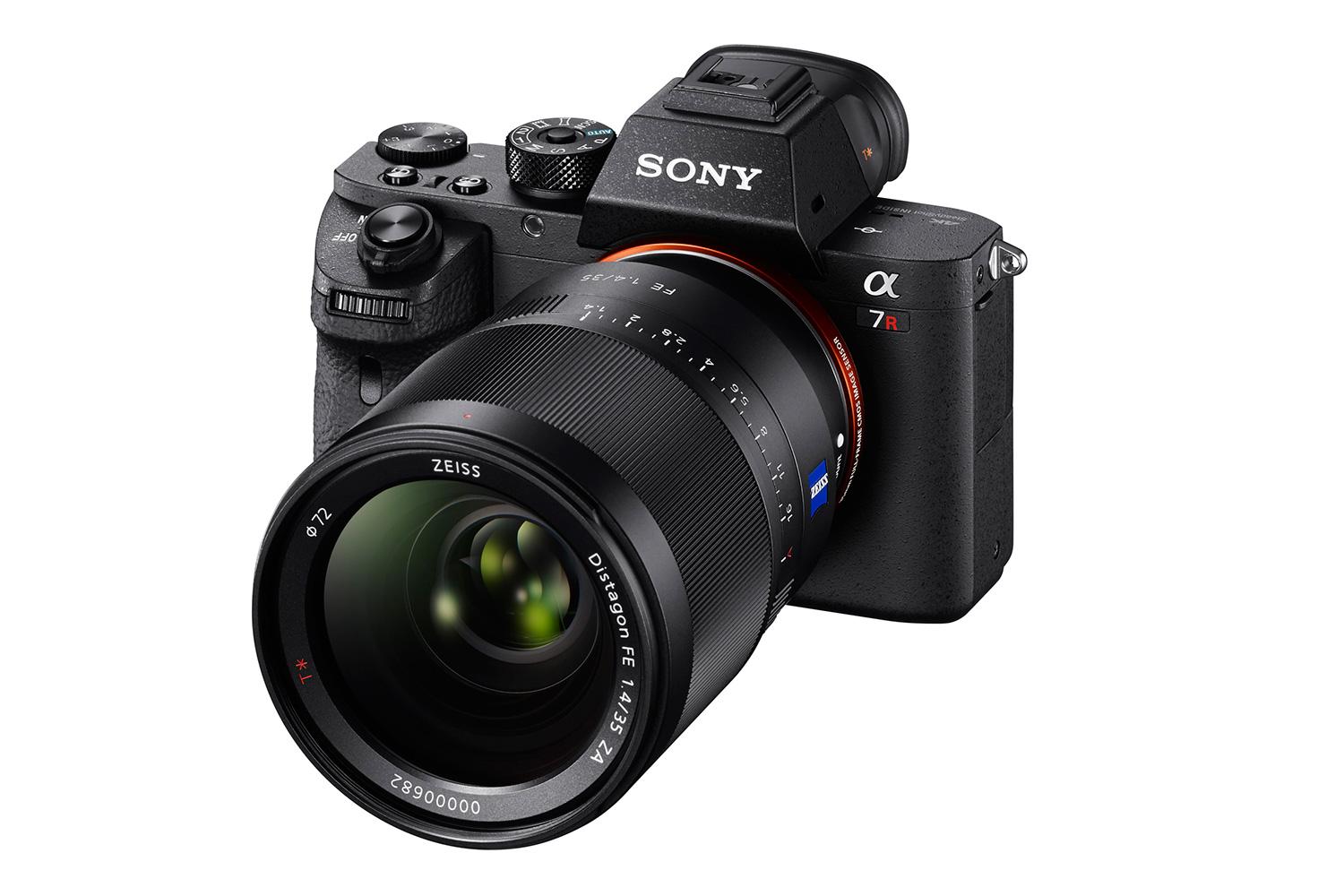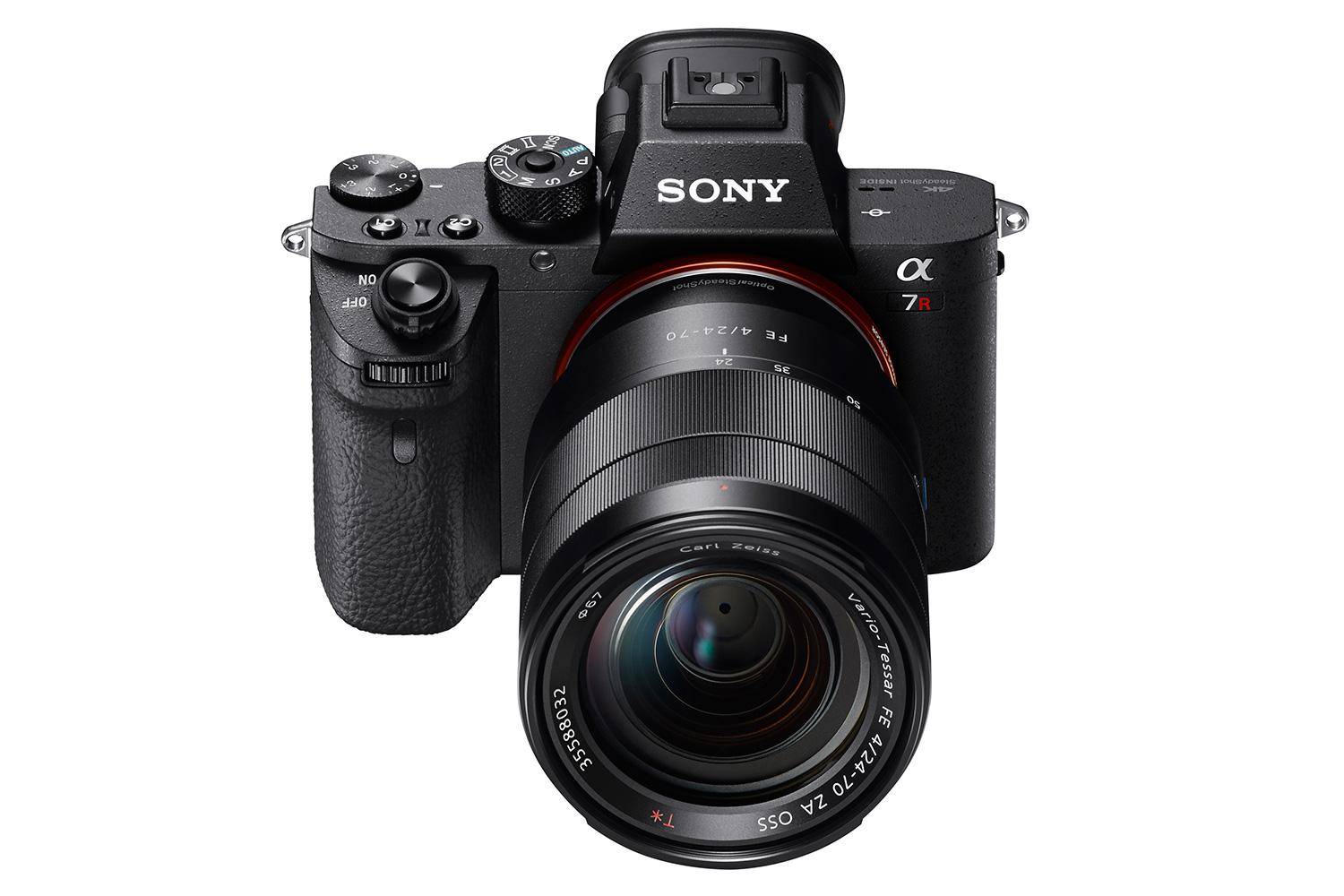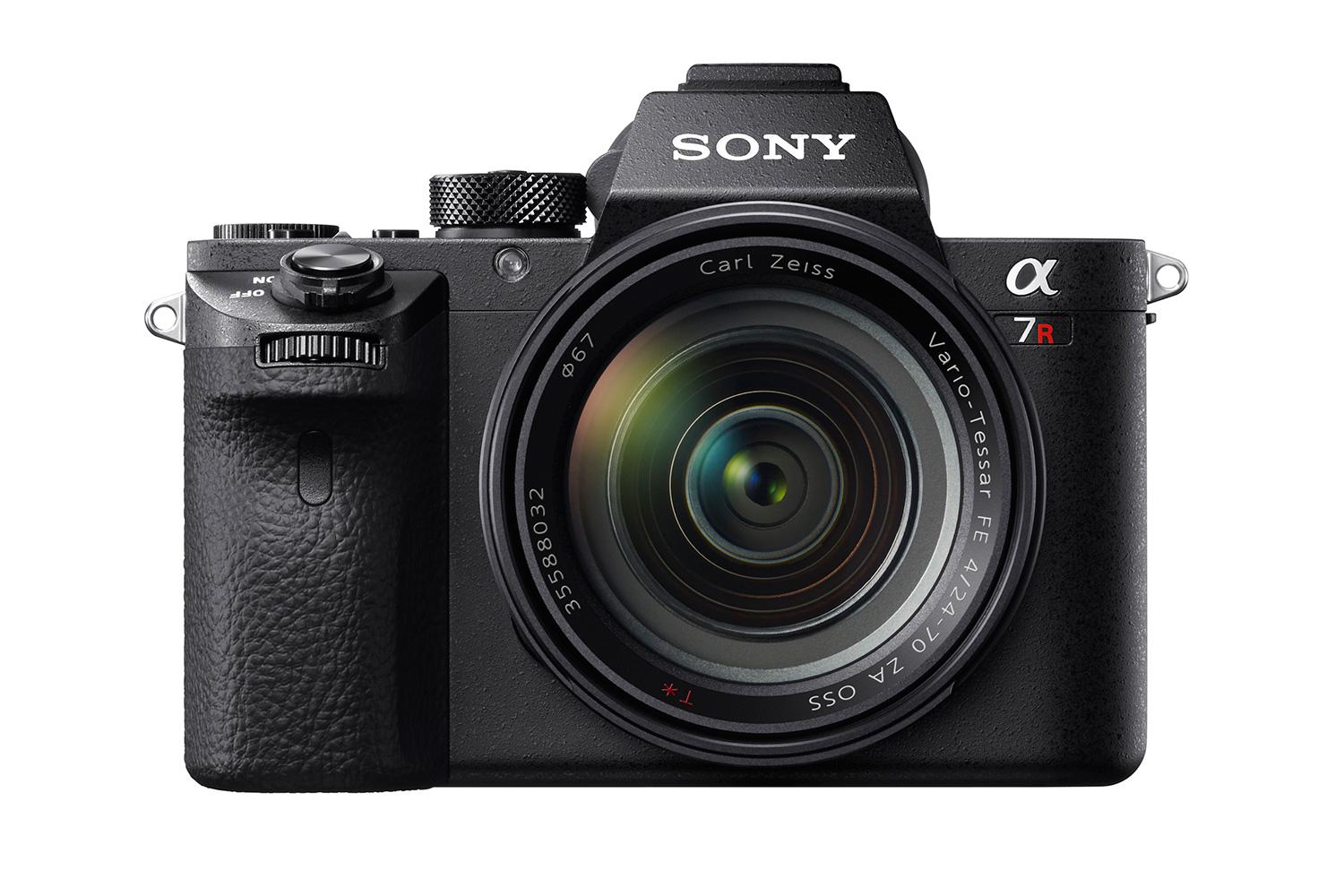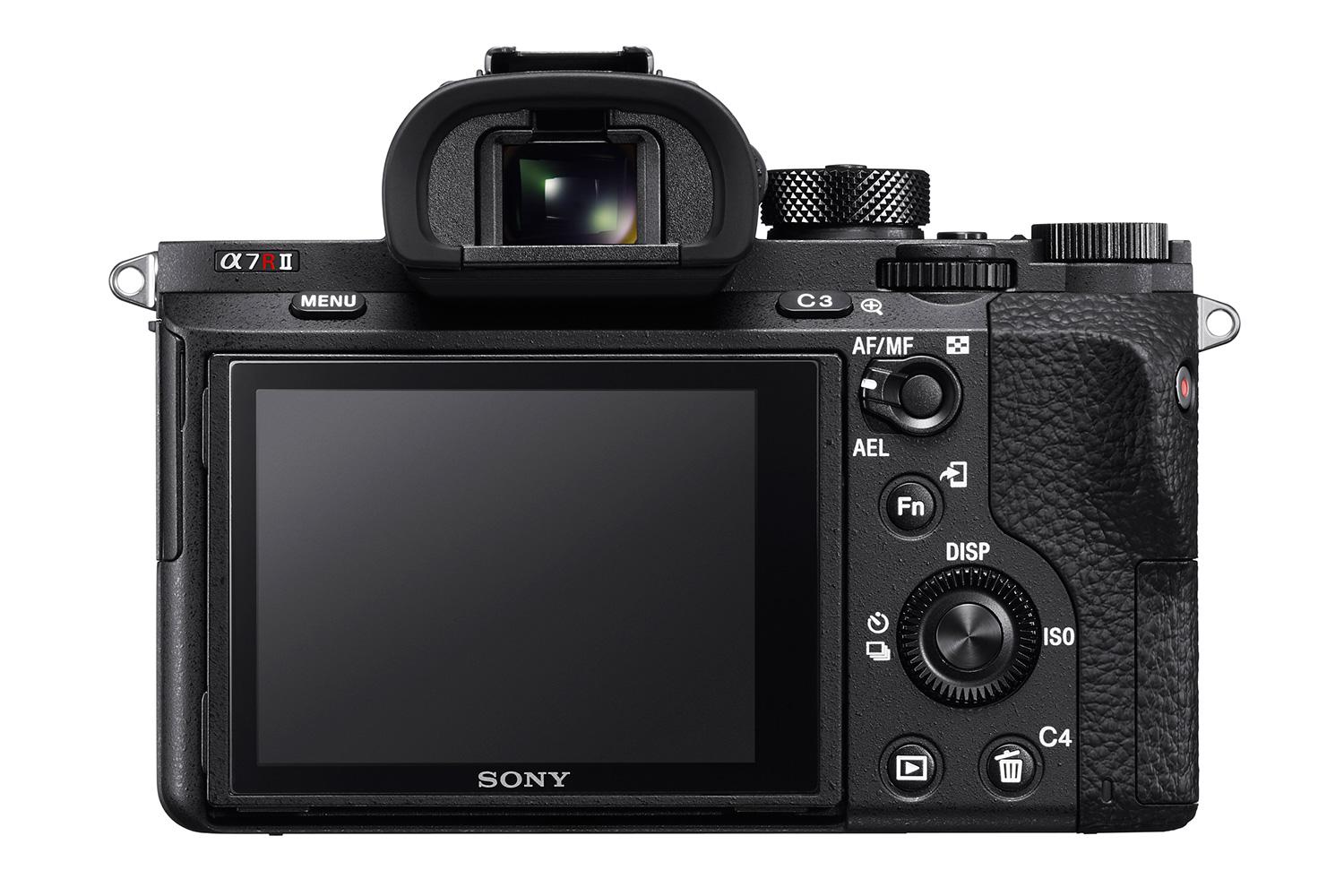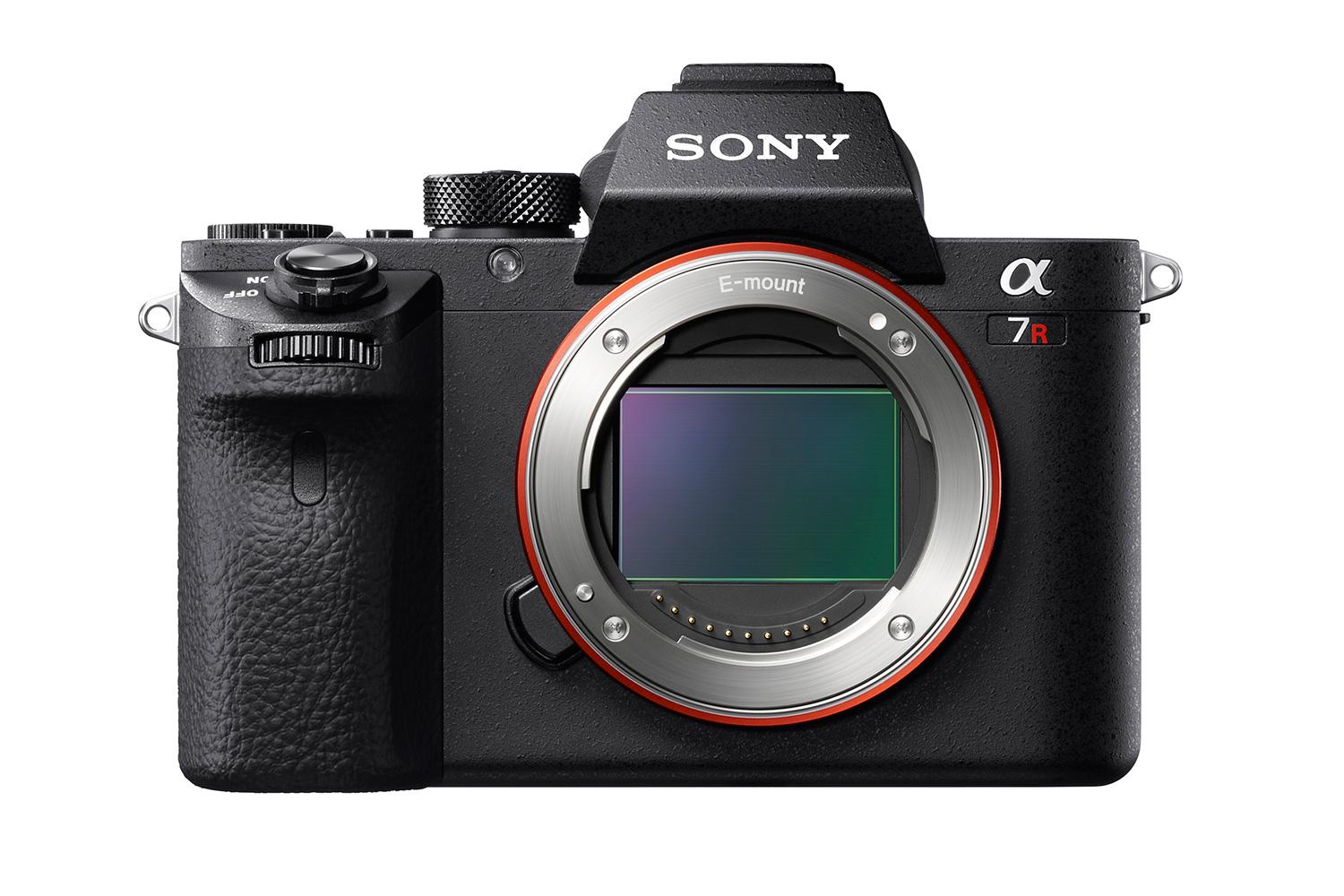Sony has been blowing the camera industry away with its A7-series of full-frame mirrorless cameras. Its latest model, the A7R II, may look like the previously announced models, but inside is a brand-new, cutting-edge sensor that will make photographers, videographers, and other manufacturers take notice. It may be a follow-up to the original A7R, but it’s a completely new and revolutionary camera.
Newly developed full-frame sensor, faster AF
Sony A7R II Highlights
- 42.4MP back-illuminated, full-frame CMOS sensor
- ISO 102,400
- 399 focal plane phase detection AF points
- 40 percent faster AF than predecessor
- AF supports SLR lenses from Sony, third-party
- Full-frame and Super 35mm 4K modes
- Cropped Super 35mm mode eliminates moire, artifacts
- In-camera 4K processing
- 5-axis image stabilization
- Higher-magnification EVF
- Design enhancements
The 42.4-megapixel Exmor R CMOS sensor is the world’s first back-illuminated full-frame sensor, and it’s also Sony’s most advanced and highest resolution sensor to date. Working with the Bionz X image processor, this sensor can reach ISO levels up to 102,400 (in expanded ISO mode), thanks to a gapless on-chip lens design and anti-reflective coating designed to take in light more efficiently. Sony boasts that photographers now won’t have to choose between high-res/high-speed and high-res/high-sensitivity. The company says the back-illuminated structure uses an expanded circuit scale and copper wiring design, which allows for fast speeds without a hit to sensitivity; compared to the first A7R, the sensor is 3.5x faster.
Autofocusing is also faster, by up to 40 percent versus the older A7R. The hybrid AF system uses 399 focal plane phase detection points — the world’s widest AF coverage on a full-frame sensor, Sony says — and 25 contrast AF points. With AF tracking on, the camera has a burst-shooting mode of up to 5 frames per second.
“Additionally, the focal plane phase-detection AF system on the A7R II works well with Sony A-mount lenses when they are mounted on the camera using an LA-EA3 or LA-EA1 mount adapter,” Sony says, in addition to full-frame E-mount lenses. “This allows users to enjoy the wide AF coverage of 399 focal plane phase-detection AF points, high-speed response, and high tracking performance with a wider range of lenses.”
More important, Sony adds, “This marks the first time that the AF system of a mirrorless camera can achieve high performance with lenses originally designed for DSLRs.” Sony also says the AF system will work with third-party SLR lenses via adapters. This is a big deal for those with an extensive collection of Canon or Nikon lenses, as it allows those users to migrate over without losing the use of equipment in which they have invested heavily.
Not to be ignored, the A7R II also has a new shutter with 50 percent less vibration when compared to the original A7R, and with a cycle of 500,000 shots. There’s also a Silent Shooting mode without any sensor vibration or movement.
In-camera 4K processing
The A7R II isn’t the first A7-series camera to shoot 4K (Ultra High Definition, or UHD, at 30p) — that honor goes to the A7S — but it takes
“In Super 35mm mode, the camera collects a wealth of information from approximately 1.8x as many pixels as 4K by using full pixel readout without pixel binning and oversamples the information to produce
For pro filmmakers, the camera supports Picture Profile, S-Log2 Gamma and S-Gamut, 120fps high frame rate movie shooting in HD (720p), time code, clean HDMI output, and other advanced functions.
5-axis image stabilization, new viewfinder, and more
The A7R II uses the 5-axes image stabilization system introduced in the A7 II, but it has been optimized to support the high-resolution sensor.
The XGA OLED Tru-Finder electronic viewfinder (EVF) in the A7R II has the “world’s highest viewfinder magnification (0.78x),” Sony says. It’s coated with Zeiss T Coating for reduced reflections.
While the body looks the same as previous A7 cameras, the A7R II has a redesigned grip and shutter button, as well as a new locking mechanism for the mode dial and new customizable buttons. It’s almost exactly like the A7 II’s look and feel. The camera also has a stronger mount design.
Optional, Sony is introducing a new 5-inch LCD with Full HD 1080p resolution. Ideal for videographers, the display “features enlarging and peaking functionality for precise focusing, false color and video level marker for adjusting exposure and S-Log display assist to assist S-Log shooting.”
The A7R II is slated for an August release, and will cost $3,200 (body only).
Quick thoughts
We spent a brief moment checking out the A7R II during Sony’s press meeting. The camera has the same solid feel we’re used to with previous A7 cameras. Its magnesium alloy design makes it lightweight, but it’s a moot point when you attach a full-frame lens onto it. We were not able to shoot and review any photos or videos, but the printouts and videos Sony showed us looked stunning.
While the A7’s full-frame resolution isn’t the 50.6-megapixel from Canon’s new EOS 5DS, it comes close; at that size, it’s more than enough for most photographers. Sony’s newly designed back-illumination technology, 4K video capture, fast AF and AF support in Sony and third-party SLR lenses, and 5-axis should make Canon a bit concerned, especially since the 5DS doesn’t have any video prowess and the A7R II feels like half the size and weight. We’ve seen what the 5DS can do for photography – and it’s amazing – but we’re really excited about the A7R II’s prospects. Stay tuned.
Editors' Recommendations
- Canon EOS R5 vs. Sony A7S III vs. Panasonic S1H: Best full-frame for video?
- Sony’s new ultra-wide full-frame lens is the first of its kind
- A9, A7R, S, II, or III? Making sense of Sony’s full-frame mirrorless cameras
- With 61 megapixels, the Sony A7R IV is the highest-resolution full-frame camera
- Panasonic Lumix S1 vs. Canon EOS R: A full-frame mirrorless matchup



